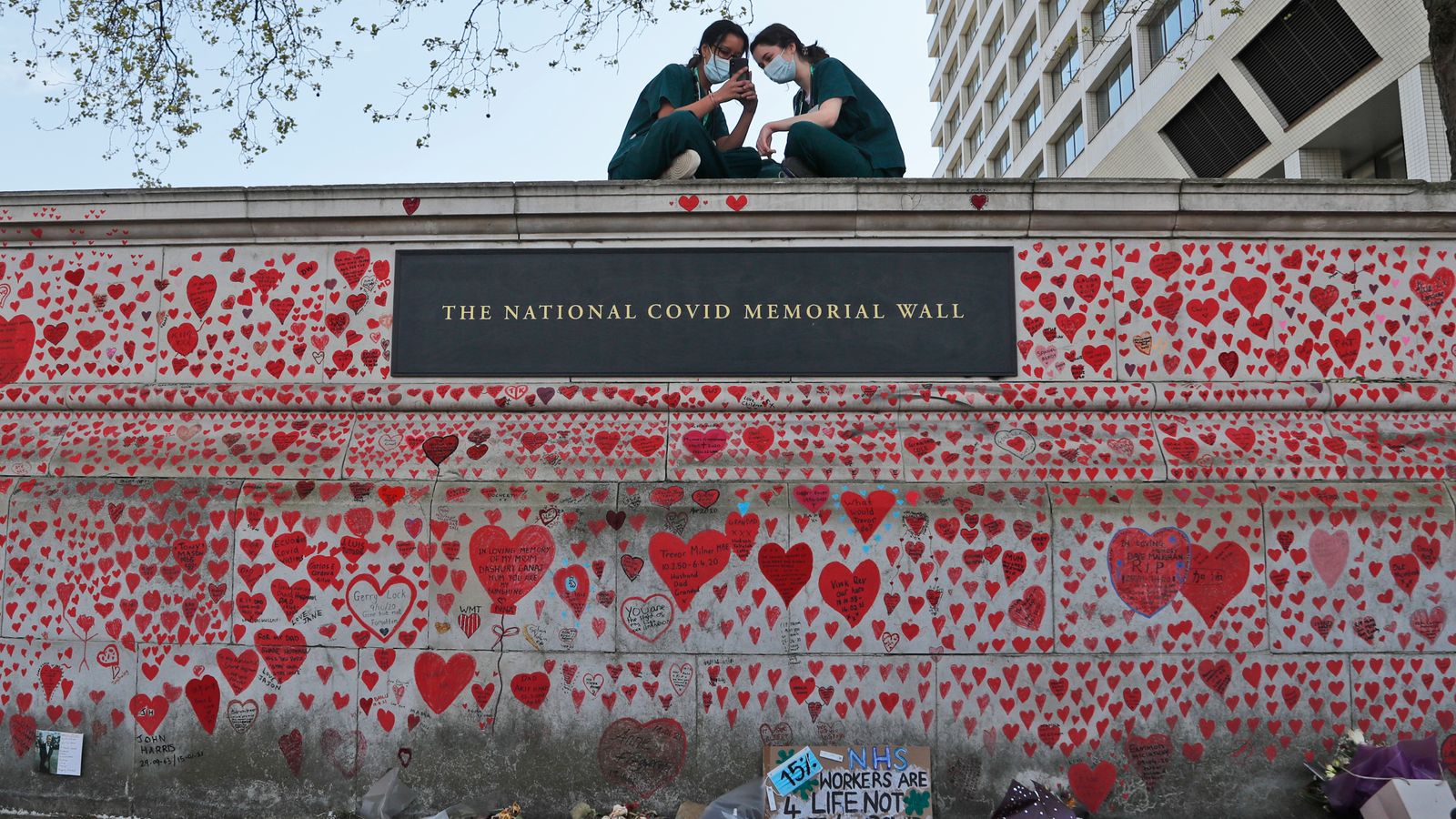Back when the prime minister first announced the roadmap for ending the COVID-19 lockdown, the modellers who provide numbers for SAGE, his scientific advisory board, produced a few charts showing what might happen in the event of the UK opening up.
Now these models are, to some extent, ancient history.
They happened before the arrival of the Delta/Indian variant on these shores, and some of the scenarios assumed a slightly quicker re-opening than was envisaged at the time.
All the same, it’s worth pondering what these models said, since such things tend to guide government policy and in this case there is a jarring difference between the projections and what actually happened.
Back then, Imperial’s model suggested that we could be facing a total COVID hospital population in England of nearly 60,000 – far, far higher than in previous waves of the disease. Even their middle-of-the-range scenario said that hospital numbers would currently be close to 15,000.
So what, pray, is the latest hospital population – the number to compare with these projections? Just 1,290 people. Now, this number is certainly rising, but it’s worth saying it’s currently somewhat better than even the best-case scenario put forward by Imperial, and not far off the best-case scenarios posited by epidemiologists at Warwick.
The point here is twofold. First, things are going well, very well, in comparison with what anyone expected in the early spring. There are likely to be a few explanations: the vaccine programme is outperforming expectations, lockdown is lasting a little longer than expected (though this latter factor is probably too recent to reflect in the numbers). The second is that everyone had expected a rise in cases this summer.
What is happening at present – with cases going up and up – is not a surprise. Indeed, it is the plan.
Keep that in the back of your mind as you see the case figures in the coming weeks. Yes they are high, and yes they are rising, but they are not exactly surprising and they shouldn’t necessarily provoke the panic they once did.
Let’s look at that growth rate though, because here again there is some tentatively encouraging news. A couple of weeks ago, cases were mounting at a fair snap, doubling every nine days, on average.
Had that continued we’d have been exceeding 20,000 cases a day this week. As it is we are slightly above 10,000 and the growth rate has dropped; in the week up to last Monday they were growing by around 4% a day – the equivalent of doubling every 18 days.
Yes it’s still growth, yes it’s still exponential (by most definitions of that word) but the growth rate is much smaller. It’s the difference between 100,000 cases a day by mid-July and 25,000 cases a day.
Strikingly, at the time the prime minister took his decision to delay the ending of lockdown last week, Britain’s case growth had already dropped from 8% to 4%.
But, as I say, the real question these days is not merely about case growth, but whether those cases turn into hospitalisations and deaths. Have we broken the deadly link, thanks to vaccines and antibodies?
Here too the evidence is encouraging, though it’s still early to declare victory. One way of looking at this is by comparing the number of cases across the country with the number of hospital admissions.
This is not a perfect measure, since it could well be engulfed by a surge in cases. Even so, the average number of people going into hospital per 1,000 COVID cases detected has dropped from 80 in the spring to just below 50 now.
Follow the Daily podcast on Apple Podcasts, Google Podcasts, Spotify, Spreaker
There is anecdotal talk about those stays in hospital being shorter too, which is tricky to draw out that convincingly from the datasets we have, but it seems consistent. Look at the age profile of those going into hospital and it’s similarly encouraging. For most of the pandemic, the admissions numbers were dominated by those aged 65 and over. Today, for the first time in this pandemic, those under 65 are outnumbering those over 65.
Put it all together and it is quietly encouraging. It suggests that the vaccine programme is working. Best of all, deaths remain very, very low especially in comparison with cases. Saying all of this doesn’t mean there is no need for caution.
All of the above is based off a few weeks of data and things could change as people mix more. Deaths are likely to rise again – but the question is whether they rise quickly or slowly. That’s one of the crucial things we’ll be monitoring in the coming weeks.






















